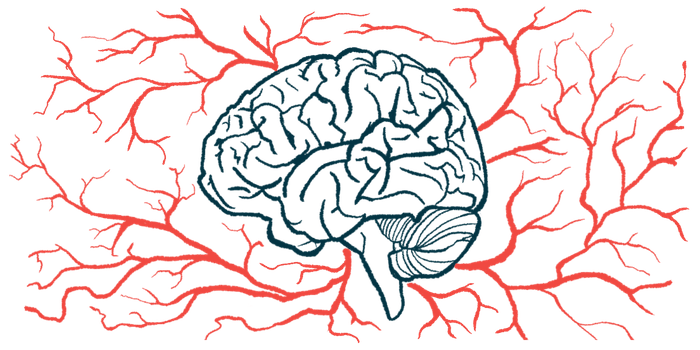Gene-editing therapy may cut stroke risk in SCD, small study finds
OTQ923 found to normalize speed of blood flow in brain of 3 adult patients
Written by |

The investigational gene-editing therapy OTQ923 resulted in normalization of the speed of blood flow in the brain of three adults with sickle cell disease (SCD), according to data from a Phase 1 clinical trial. Findings suggest the treatment could help lower the risk of stroke in patients.
The study (NCT04443907), sponsored by Novartis Pharmaceuticals, was stopped early due to commercial reasons, as the company discontinued its SCD gene-editing program in 2023. Earlier findings from the study showed OTQ923 promoted durable fetal hemoglobin production and prevented vaso-occlusive crises (VOCs).
“We saw that after gene therapy, elevated blood flow speed in the brain came down to normal levels,” Akshay Sharma, the study’s first author, said in a news story. “This is the closest physiological evidence we have that gene therapy could be effective for patients with neurovascular disease who are at risk of or have had a stroke.”
The results were shared in a letter to the editor, “Normalization of Cerebral Hemodynamics After Gene Therapy in Adults With Sickle Cell Disease,” published in the American Journal of Hematology.
In SCD, red blood cells contain an abnormal form of adult hemoglobin, or the protein that carries oxygen in red blood cells. This causes the cells to become stiff and sickle-shaped, making them break down more easily and block blood flow. The blockages can lead to pain and other complications, known as VOCs.
People with SCD at higher stroke risk
People with SCD are at higher risk of stroke due to blockages in brain blood vessels that reduce oxygen supply. To compensate, the body increases blood flow speed to deliver more oxygen, but this can shorten the time for oxygen to be released from red blood cells, potentially worsening oxygen deprivation.
“You can think of red blood cells filled with oxygen like a bus filled with people. If the bus is going too fast, passengers can’t get off the bus, and oxygen is not delivered,” Sharma said. “However, if the bus slows down so passengers can safely hop off, as happens when hemoglobin levels rise, then oxygen gets properly delivered to the brain tissues.”
OTQ923 uses the CRISPR-Cas9 gene-editing tool to modify a patient’s hematopoietic stem cells (early red blood cell precursors) collected from their blood. The edits are designed to boost production of fetal hemoglobin, a form of hemoglobin that carries oxygen more effectively than the adult version of the protein. Modified stem cells are then infused back into the patient, where they are expected to increase fetal hemoglobin levels and reduce complications of SCD.
In the study, researchers reported the effects of OTQ923 on blood flow in the brain using MRI on three patients enrolled in the Phase 1 study. The patients, two men and one woman, were from 21 to 24 years old, and African American. Two had a history of silent stroke that was detected only in imaging scans.
MRI was performed before treatment was given, and one and two years thereafter. Results showed the treatment significantly decreased brain blood flow from 22%-43% after one year, reaching nearly normal levels that were stable over time.
According to the researchers, these results were comparable to those seen for other SCD treatments, including hydroxyurea, which has a small effect on brain blood flow, or blood transfusions, which have a stronger but transient effect. The gene therapy, however, has a greater and longer-lasting action, which is seen in patients who undergo bone marrow transplants.
“Until now, we only had one option that had a long-term impact on blood flow in the brain: bone marrow transplantation,” Sharma said. “But now we may also have gene therapy as another viable method to protect against neurovascular disease in people with sickle cell disease.”
This study provides preliminary evidence that a gene-editing therapy that increases the levels of fetal hemoglobin may reduce the risk of stroke in people with SCD, according to the researchers, although longer-term follow-up and similar testing in a larger number of patients are needed.






